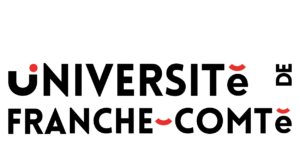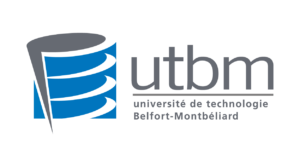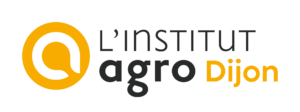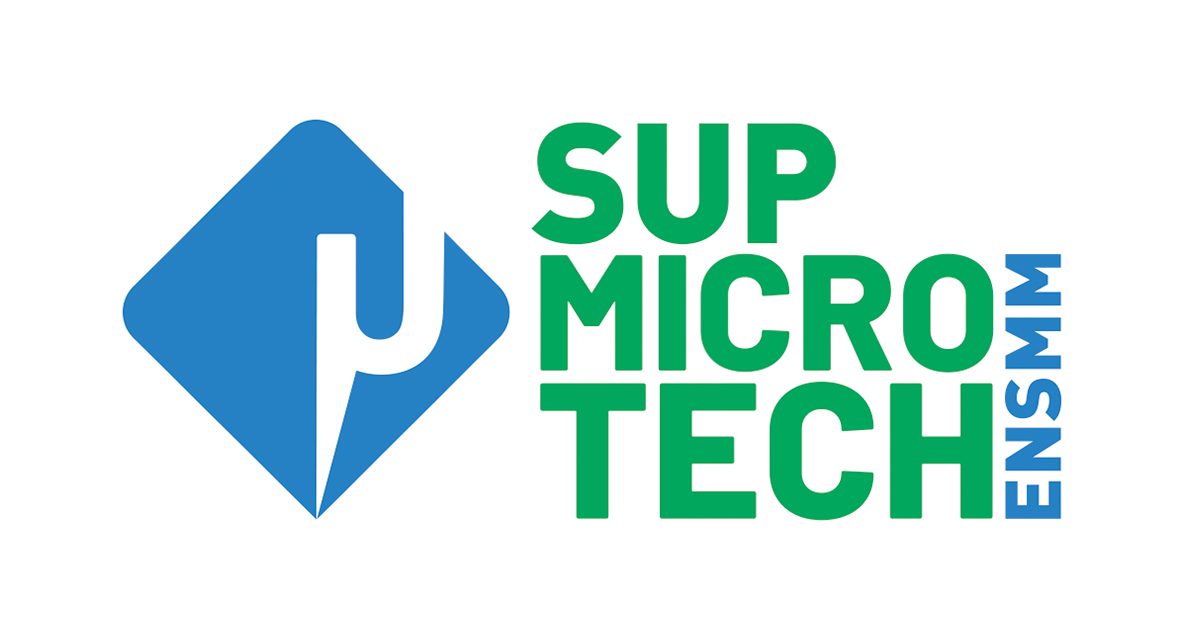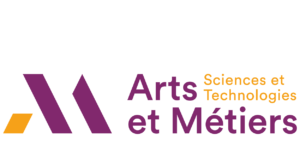ISITE-Industry joint projects
Compared to other developed countries, French companies are only marginally involved in long-term fundamental research. Encouraging the participation of industries is a major challenge, in which ISITE-BFC actively participates, especially through the support of public/private collaborative projects whose potential future applications are economically relevant. For each project, a collaboration is set up between one UBFC research team and one or several industry partners. The objectives are defined by the industry partners, which also nominate the project leader.
The industrial partners list related to ISITE-BFC is available here.
1st AXIS
In this project, we will investigate a new smart system made from a hardware component and a software approach that will enable the creation of the basic blocks of programmable matter, a matter made from centimeter-size modules attached together and able to move. The hardware component is a quasi-spherical robot using computationally controlled forces for power distribution, communication, adhesion (latching), and locomotion. The software approach aims to provide a new way of programming such a complex system through a scalable, real-time, efficient, expressive and at the same time safe programming of an ensemble of robots with an emphasis on self-configuration and self-reconfiguration distributed algorithms. The application will use the robots to sculpt a shape-memory polymer sheet.
Coordinator:
Julien BOURGEOIS
FEMTO-ST – UMR 6174 (UFC, CNRS, ENSMM, UTBM)
Collaborators:
- UFC
- uB
- ENSMM
- CNRS
- PSA Peugeot-Citroën
- Tech Power Electronics
| This project is co-funded by the BFC Region |
 |
The BAKUP project focus on ultra-high precision blanking with particular emphasis on automotive parts made of high-strength, high-alloy steel. The. The experimental work will be carried out on a very highly precise servo-electric press. In order to determine the limits of these high-power industrial tools, it will be necessary to understand the influence of the cutting conditions (penetration law, sets, choice of displacement cycles, speed, acceleration-deceleration of the table, shape of the punch And mode of manufacture, etc.) and the parameters of cutting (nature of the sheets, punching materials and finishing method, lubricants and their mode of deposit, etc.). In order to determine the limits of these high potential industrial tool it will be necessary to understand the influence of the process conditions (penetration law, clearances, choice of forming cycles, speed, acceleration-deceleration of the table, punch shape and manufacturing, etc.) and the blanking parameters (nature of the sheets, punch materials and their production methods, lubricants). The quality of the parts produced by the cutting of high thickness sheets of high alloyed steel will be evaluated by the appearance of the blanked edge, the dimensions of the blanked area (perpendicularity – surface condition Ra Rz, stability of X-Y coordinates) and to a lesser extent the volume of the burrs. The service life between maintenance is another sensitive criterion that will be evaluated during the work. Among others the very new techniques which will be involved in the project will be femtosec laser texturing on tools, TLA (Thin layer activation) and tomography to monitor the tool’s lifetime.
Coordinator:
Xavier ROIZARD
FEMTO-ST – UMR 6174 (UFC, CNRS, ENSMM, UTBM)
Collaborators:
- ENSMM
- UFC
- CNRS
- SCODER
Nowadays, refrigeration represents 15% of electricity global consumption and over 23% of French domestic electricity consumption. Application areas are various, including buildings (air conditioning, heat pumping), food (refrigeration, freezing, deep freezing, freeze‐drying), biomedical (biological conservation), transportation (air conditioning vehicles, trucks and refrigerated ships), etc. Nowadays, refrigeration
is provided by technologies based on the thermodynamic principle using classical cycles of
compression and expansion of refrigerant fluids whose performance, toxicity and environmental impact
(greenhouse gases) are questioned. Researches on this subject have contributed to improve the system efficiency; however, these technologies seem to have reached their limits, especially for environmental considerations. The project aims to design and manufacture innovative micro-structured magnetocaloric composites for sustainable and environmentally friendly refrigeration machines and heat pumps.
Coordinator:
Thierry BARRIERE
FEMTO-ST – UMR 6174 (UFC, CNRS, ENSMM, UTBM)
Collaborators:
- UFC
- UTBM
- ENSMM
- CNRS
- DELFINGEN
- NEXTPAC
Internet of Things, connected cars, intelligent parking systems, secure timekeeping, connected cyberphysical systems and air traffic control systems: all increasingly rely on software for flexibility and service delivery.
But these complex connected systems face significant security and reliability challenges, and their increasing complexity means that detecting and correcting vulnerabilities in business logic requires highly skilled R&D techniques and people.
The SARCoS project aims to develop advanced cognitive and automated techniques and tools for testing security and robustness at the level of business logic, which will have a strong impact on how industry will reduce vulnerabilities in these complex and increasingly connected systems.
This project directly involves four industrial partners in four distinct application areas :
– Intelligent parking systems with Parkeon,
– Internet of Things with Easy Global Market,
– Air Traffic Management Systems with Smartesting
– Safe timing with Gorgy Timing.
Coordinator:
Bruno LEGEARD
FEMTO-ST – UMR 6174 (UFC, CNRS, ENSMM, UTBM)
Collaborators:
- USC
- PARKEON
- EGM
- Smartesting
- Gorgy Timing
General conclusion:
The SARCoS project established the following results:
- A generic architecture for data alteration on control systems to simulate FDIA attacks
- An instance of this architecture in the air traffic control domain through the FDI-T ATC tool at TRL 5 level and tested with the partner Smartesting Solutions & Services
- An instance of this architecture in the VTS domain at TRL 4 level
- An instance of this architecture in the IPS domain at a TRL 3 level based on data provided by the partner Flowbird
- Several communications in conferences dedicated to cybersecurity, including one oriented towards the industrial public during the FIC show in Lille in February 2020.
Efforts have been intensified both in terms of communication of the project results, and in terms of experimental validation, potentially including new industrial partners beyond the initial partners.
We can conclude that the work carried out and the results obtained within the framework of the SARCoS project constitute a decisive technological advance in view of the production and marketing of an offer for the two sectors initially targeted (aerial surveillance and parking systems), to which the field of maritime surveillance was added during the project.
The NEOTISS Company is a world leader in the manufacture of welded thin tubes, intended for electricity production, seawater desalination and aeronautics/automotive industries. These products are potentially submitted to severe environments (temperature, pressure, surroundings), both their initial content in hydrogen and capability to resist to its absorption within conditions in service are crucial elements for NEOTISS to qualify them. Hydrogen is particularly volatile and few analysis tools are available to localize it inside a metallic matrix. Research conducted in collaboration with ICB, allows Neotiss to highlight phenomena triggered by hydrogen dissolution, using classical characterization tools. This approach of Titanium hydriding shows the perspective of new technological solutions to limit hydrogen absorption by the material. We wish to explore these solutions in the IHTT project. Its ambition is threefold:
- To improve its manufacturing processes of Titanium welded thin tubes. Two aims have to be reached: (1) materials suppliers: to establish the specifications of a metal strip corresponding to a finite product in which the hydrogen absorption is limited to the maximum, under severe conditions; (2) to adapt the tubes manufacturing process in order to guarantee an optimal durability of the finite product (NEOTISS);
- To dispose of means, knowledges and skills in the field of Titanium alloys hydriding, both from experimental and numerical simulations point of views, considering that the specificity of hydrogen embrittlement of these alloys needs very particular means and know-how (ICB) ;
- To improve its skills in oxides layer growth by chemical or electrochemical conversion (UTINAM).
Coordinator:
Tony MONTESIN
ICB – UMR 6303 (CNRS, uB)
Collaborators:
- uB
- UFC
- CNRS
- NEOTISS
- UTINAM – UMR 6213 (CNRS, UFC)
General conclusion:
The different conditions of surface treatments studied in this project proved to be efficient in reducing the hydrogen absorption by the material, to varying degrees:
- Anodizing is the most efficient process, however a strain imposed to the tube during its commissioning could alter the anodic layer and so reduce its This technique could be implemented by NEOTISS at the end of the tube production process, in a dedicated manufacturing line.
- Among the two mechanical treatment processes, shot-peening offers better results reproducibility for the same implemented conditions. This one could be set in the continuity of the tubes shaping line, but would need a complementary specific technological development for the internal surface treatment of these tubes.
- As for asymmetrical rolling, its implementation would take place at the beginning of the tubes shaping However, in order to be truly efficient, this process needs more investigations, by collecting samples from industrial rolling mills, and verifying the capability of these new foils to be mechanically deformed when passing through the NEOTISS production lines.
These results point to various prospects for improving the manufacturing process of T40 titanium tubes produced by NEOTISS. Their application is a function of technological means that will require validation within the framework of an internal design process carried out by the company.
Laser-based gyroscopes are systems that have the capability to perform rotation sensing with the highest degree of sensitivity. They are nowadays needed in a wide diversity of high-technology systems, such as aeronautics and aerospace engineering, remote vehicle guidance, robotics, and high-precision navigation in general. Their principle of operation relies on two counter-propagating laser beams, which experience different optical paths when submitted to rotation, thereby permitting angular motion sensing with high accuracy. Currently, the two leading technologies of laser-based gyroscopes are the fiber optic gyroscope and the ring laser gyroscope. The present project aims to explore the technological and commercial viability of a whispering-gallery mode gyroscope (WGMG), where the two counter-propagating laser beams are clockwise and counterclock-wise signals circulating at the inner periphery of a millimeter-size whispering- gallery mode disk-resonator.
The expected outcome of this project is to design and realize an industrial prototype of compact photonic gyroscope with the potential to provide a performant and competitive alternative to existing technological solutions.
Coordinator:
Laurent LARGER
FEMTO-ST – UMR 6174 (UFC, CNRS, ENSMM, UTBM)
Collaborators:
- ICB – UMR 6303 (CNRS, uB, UTBM)
- uB
- CNRS
- iXblue
The ANTARES project tends to contribute to the race towards 5th generation (5G) telecommunication applications, which will be highly beneficial for society by opening wide possibilities for internet-of-things, data transfer, extreme device density, smart transport/cities and communication systems, V2X applications, etc. The next generation of high –frequency (6-9 GHz) wide-band (>10%) RF filters or frequency-agile (tunability of central frequency > 10%) filters are urgently needed for the development of 5G infrastructures/networks/communications. This motivates further development of robust bulk acoustic wave (BAW) filters, adapted to the high-frequency applications. The bottleneck of the present BAW filter technology is very limited electromechanical coupling (K2<7%) of available thin film materials. Alkaline niobates (LKN) were identified theoretically as the materials with highest available K2 (up to 88 %) of BAW, but LKN thin films are still not available due to major issues in their synthesis. To achieve LKN films with targeted K2>20%, ANTARES proposes an innovative approach – the development of advanced architectures based on LKN in line with advanced methods such as chemical engineering, control of orientation through epitaxy, strain and domain engineering. These architectures may offer a new possibility to increase significantly K2 and quality factor, to reduce acoustical losses, and to ameliorate stability at high power densities. To implement newly developed materials to BAW filters, multidisciplinary approach implying chemistry, material science, microtechnology, physics and acoustics will be applied. ANTARES will contribute to the fundamental understanding on physical properties of composite materials and consequently acoustical performance in order to enable advanced design of future materials.
Coordinator:
Ausrine BARTASYTE
FEMTO-ST – UMR 6174 (UFC, CNRS, ENSMM, UTBM)
Collaborators:
- UFC
- ENSMM
- Annealys
- Qualcomm
Odorless and colorless gas, CO is formed during the incomplete combustion of organic matter. High levels of CO can be encountered in traffic jams or when malfunction of a heater occurs. On a daily basis, we are exposed to numerous atmospheric pollutants emitted in particular by urban car traffic. In high traffic environments (ring roads, tunnels, city, etc.), pollutant concentrations that are dangerous for health are high. CO is responsible for 350 deaths per year in France (more 5000 hospitalizations).
The aim of CO2DECIN is to design mixed carbon monoxide (CO) and carbon dioxide (CO2) sensors based on the selective adsorption properties of these gases by active and porous molecular materials in view to develop new marketable sensors. CO detection is a crucial point for industry and domestic purposes but the current CO sensors are limited either by a low selectivity towards other gases or by a low sensibility.
The project consortium proposes to elaborate a new family of dual CO/CO2 sensors based on the surface acoustic wave (SAW) technology, known for their high sensitivity to surface phenomena associated with a specific molecular material functionalization (COF based on cobalt corroles or MOF based on triazacyclononanes).
The mass detection system developed by FEMTO-ST is based on the principle of quartz microbalance. Quantification is based on the slowing down of the propagation speed of the waves due to the mass deposited on the device’s surface. The use of Love waves can gain a factor of 10 in sensitivity compared to a conventional quartz microbalance. A reference element is subjected to the same conditions as the test body in order to subtract the background noise. This technology has already achieved a detection limit for CO below 80 ppb.
Strong complementarities between the academic and industrial teams in terms of research and development is an essential asset of this project.
Coordinator:
Virginie BLONDEAU-PATISSIER
FEMTO-ST – UMR 6174 (UFC, CNRS, ENSMM, UTBM)
Collaborators:
- ICMUB – UMR 6302 (CNRS, uB)
- CNRS
- ENSMM
- uB
- UFC
- PSA-Peugeot
- Frec/n/sys
General conclusion:
The objective of this project was to develop a new family of mixed CO/CO2 sensors based on the surface elastic wave (SAW) technology known for its high sensitivity and selectivity when associated with a functionalization by a specific molecular material. Many parameters were evaluated during this project in order to assess the sensitivity, reliability and repeatability of SAW sensors. This study focused on the nature and the method of deposition of the silica guiding layer of the SAW sensor, the ageing of the layers, the influence of the size of the crystals and their rate of covering on the surface. The tests were also carried out in conditions close to real life in the presence of humidity, oxygen and interfering gases in order to evaluate the behavior of the sensors. At the end, this project allowed the realization of a device capable of selectively measuring CO and CO2 in a mixture. For this purpose, a first sensor mounted in differential and combining the properties of cobalt and copper corroles could be used for the measurement of CO and a second one coated with ZIF-8 is dedicated to the measurement of CO2.
The PAPIRUS project (Upwelling Technology and Injection of Stabilizing Agents for Assisted Pumping Using Tilted Recovery Wells), which is co-funded by the French Agency for Energy and Sustainable Development (Gesipol ADEME, funding 2019-2021), aims at optimizing the recovery of dense non-aqueous liquid phases and the removal of diffusive pollutant transfer from low transmissivity zones that impact groundwater quality of a sedimentary aquifer in Jura. This project deals with the set-up of innovative and sustainable remediation methods and monitoring technologies: it aims at overcoming current limits in terms of effectiveness, cost, feasibility and sustainability for the in situ regeneration of aquifers polluted by chlorinated contaminants, through the development of innovative technologies using viscous fluids, recovery and imaging devices.
Especially, it aims at:
- using the promoting properties of viscous fluids (foams and polymer solutions) to solve problems for the treatment of deep source zones with high spatial variations, through the enhanced sweeping and reagent delivery into targeted zones, and through the controlled recovery or the persistent destruction of contaminants,
- providing new non-invasive viewing tools for the monitoring of clean-up operations, using tomographic geophysical technologies,
- getting control on clean-up limiting phenomena and setting-up all these monitoring and treatment methods and technologies from the lab-scale to the field-scale,
- assessing the most promising technologies in actual conditions at the impacted site.
Coordinator:
Nicolas FATIN-ROUGE
UTINAM – UMR 6213 (CNRS, UFC)
Collaborators:
- Innovyn
- Serpol
- Intera
General conclusion:
These works have shown that despite the strong anisotropy of subsoils impacted by pure phases of chlorinated solvents, pollutant recovery as pure phases using aqueous fluids with high capillary number and the visual monitoring through time-lapse ERT provide strong improvements for in situ treatments. On the one hand, DNAPL recovery > 90% was obtained using various recovery strategies and all the dissolved contaminants degraded by reductive dehalogenation avoiding for vinyl chloride stabilisation. On the other hand, ERT using vertical lines of electrodes allow for a fast qualitative assessment of remedial operations.
The turbine disk is a critical part of modern aircraft engines. The continuously increase in engines sales and the always tighter quality specifications have led the rotor disks producer SAFRAN AICRAFT ENGINES to invest 20 M€ in its disks factory of Le Creusot in BFC. Similarly, SAFRAN launches an ambitious scientific project for the modeling of a complex machining operation: the broaching of the slots used for the blades attachment. Broaches are specially designed tools for a unique slot shape, they are very sensitive and can jeopardize the engine manufacturing because of:
- – A lack of knowledge on the process;
- – Expensive and time-consuming design;
- – Short tool life time (only 7 parts commonly) due to uncontrolled parameters;
- – New super-alloys with low machinability.
To keep its international competitiveness, SAFRAN needs models and methodology to design the novel and upcoming generations of broaches. The previous research works on the subject between SAFRAN and ENSAM Cluny has enabled to define an ambitious research project to keep the industrial breakthrough and competitiveness.
The control of the broaching operation will be obtained by the numerical modeling of the whole process. Firstly, it will be necessary to work on a single broach tooth to be able to model the local mechanical loading. To do so, the present project will develop an innovative in-situ methodology for the inverse determination of constitutive laws of materials subjected to thermomechanical loads under the cutting edge. This project associates the LaBoMaP for its recognized knowledge on difficult-to-cut materials and constitutive/damage laws identification involving for instance Ultra High Speed Camera combined with Digital Image Correlation and inverse modeling.
In a second phase, the influence of the tool wear on the surface integrity will be modelled as it is a critical parameter for the disks in service life expectancy. From the previous local analysis, a global modeling will be set up to design the whole broaching process with the precise definition of cutting angles and teeth progress.
This project aims to provide a demonstrator able to model the broaching operation and guidelines the design work of the future broaches.
Coordinator :
Gérard POULACHON
LABOMAP – EA 3633 (Arts et Métiers – ParisTech)
General conclusion:
Numerical simulation is an indispensable tool in understanding physical phenomena and improving metal cutting. Until now, these tools used approximate constitutive laws, since they were obtained from tests whose speeds and temperature variations were orders of magnitude lower than industrial practice. The challenge of the DISC thesis was to make the cutting test, an in-situ test of thermomechanical characterization of the material. This very upstream study was based on one of the cutting-edge experiments (coupled visible camera and high-speed infrared) and on the development of innovative algorithms and inverse methods. These constitutive laws have been implemented to allow the development of tools to help design cutting tools geometries in planing operations for advanced industrial applications (BOOST thesis). The scientific methodologies have been implemented on Inconel alloys. Their importance is highly strategic for the laboratory, which is currently launching a thesis on the generalization of the methodology and is investing in an ultra-fast experimental cutting bench.
2nd AXIS
The project ‘Agroecology in BFC’ plans to explore the potential for a shift of the regional agriculture toward agroecology. The project is based on three pillars:
- The co-design of a ‘hot spot’ of agroecology on the INRA experimental farm. Agriculture will there be changed drastically in order to maximize the benefits of ecological processes at the landscape level, with the aim of reaching profitability before 10 years;
- A regional network of experiments sharing methods for economic and environmental assessments of agroecological systems. Special attention will be paid to the assessment of the quality of agroecological products (taste, nutritional and health value);
- A specific focus on key conditions required for a successful shift toward agroecology, including social and economic studies of the point of view of the farmers, of the agro-industrial chains, and of consumers.
Coordinator:
Nicolas MUNIER-JOLAIN
Agroécologie – UMR 1347 (INRAe, AgroSup Dijon, uB)
Collaborators :
- AgroSup
- uB
- CNRS
- INRAe
- Dijon Cereales
- Artemis
- Agronov
- DRAAF
- Lycées
- CA21
- CRA BFC
- Terres Inovia
- Arvalis
- Grand Dijon
The aim of the NatAdGES project is to reduce greenhouse gas (GHG) emissions of agricultural origin by focusing on nitrogen oxide (N2O) emissions. The radiative power of this gas is very strong and agriculture is its main anthropic source. The ambition of NatAdGES is to exploit microorganisms taken from INRAE’s collections and additives resulting from the research works of the Centre Mondial de l’Innovation – Groupe Roullier or developed in this project, to reduce the intensity of GHG emissions by soils. The approach proposed addresses different types of agriculture (conventional, organic, etc.) and allows quantifying and communicating the emissions avoided.
NatAdGES is structured in 4 Work Packages (WP):
- The core of the project, the Natural Additives WP, is aimed at developing products of natural origin that have an impact in soils on the biological processes involved in N2O emissions;
- The project proposes to develop tools capable of quantifying, from the field scale to that of the Bourgogne-Franche-Comté Region, the volumes of N2O emissions avoided through the use of the additives proposed by the Quantifiers WP;
- It also proposes to reflect on the socioeconomic measures that will favour the use of these additives by the agricultural sector in the Incentive WP;
- and the use of tools to communicate on emission avoidance to public decision-makers and organisations via the Dissemination WP.
Coordinator:
Catherine HENAULT
Agroécologie – UMR 1347 (INRAe, AgroSup Dijon, uB)
Collaborators:
- Biogéosciences – UMR 6282 (CNRS, uB, EPHE)
- ThéMA – UMR 6049 (CNRS, uB, UFC)
- ASD
- INRAE
- UFC
- ADEME
- Roullier Groupe – Agro Innovation International
- I@D Territoire Digital
Social networking sites have modified social relations, our relationship with time, and the media ecosystem as a whole. New forms of interpersonal and community-based communication have emerged, exploiting the participatory and networked potential of these new channels. Multiple discordant voices, uncontrollable and potentially damaging messages, spread massively in real-time, represent a major new risk for companies, who need access to social listening tools to help them adapt their commercial and communication strategies. The IT tools commonly used constitute “black boxes” which ignore the specific context of different domains. Applied to the food industry, recently rocked by major scandals catalysed by social media, the project will design and develop a real-time observatory of trends and “weak signals” emerging in food-related discourse on Twitter, which is believed to act as an influential echo-chamber, spreading discourse rapidly among key online social groups. It will take the form of a digital platform combining big data, real-time analysis tools and artificial intelligence applied to mass data-processing. The algorithms used will take into account domain- related knowledge / business contexts in order to understand the ways in which discourse emerges and circulates within this particular social space. COCKTAIL will investigate emerging cultural trends linked to eating practices, critical discourse which might snowball, key domain-related stakeholder communities on Twitter and the links/interactions between them.
Coordinator:
Gilles BRACHOTTE
CIMEOS (MSH Dijon) – USR 3516 (uB, CNRS, national network of Houses of Human Sciences)
Collaborators:
- CIMEOS – USR 3516 (uB, CNRS, national network of Houses of Human Sciences)
- CSGA – UMR 6265 – 1324 (AgroSup Dijon, CNRS, uB, INRAE)
- ELLIADD – EA 4661 (UFC)
- LE2I – UMR 6306 (uB, CNRS, Arts et Métiers Paris Tech)
- INRAE
- uB
- UFC
- Atol Consulting and Development
- Webdrone
3rd AXIS
Most advanced non-small cell lung cancer (NSCLC) are treated with chemotherapies in combination or not with targeted therapies such as bevacizumab (anti VEGF-A). Despite the effectiveness of these therapies, the prognosis remains poor and the disease could progress rapidly, requiring a second line of treatment. Recently, immunotherapies (IT) using monoclonal antibodies targeting checkpoints inhibitors of the immune response, such as PD-1, demonstrated their superiority compared to standard second line chemotherapies. However, despite the strong contribution of anti-PD-1 (nivolumab) in NSCLC treatment, this immunotherapy is not effective in all patients, and predictive biomarkers of treatment efficacy are needed for efficient patient management. To date, no predictive biomarker for the therapeutic efficacy of nivolumab has clearly been identified. The assessment of PD-L1 expression in tumours by immunohistochemistry (IHC) has been proposed but suffers several drawbacks such as choice of antibodies, biopsy samples availability, temporo-spatial heterogeneity of PD-L1 expression, other PD-1 ligands expression, etc. Recent translational studies suggested that the level of tumour infiltrated CD8 T Lymphocytes may be a better marker than PD-L1 expression.
In this context, the aims of the BIOCAIR project are:
- to obtain a proof of concept of the use of radiolabelled anti- CD8 fragments as imaging biomarkers of the efficacy of ITs such as anti-PD-1;
- to identify at least 3 new biomarkers as potential biomarkers of IT efficacy;
- to develop antibodies against these targets and validate them as imaging biomarkers of IT effectiveness.
Coordinator:
Franck DENAT
ICMUB – UMR 6302 (CNRS, uB)
ONCODESIGN
Collaborators:
- LNC – UMR 1231 (uB, Inserm, EPHE, AgroSup Dijon)
- LIIC – EA 7269 (uB, EPHE)
- Centre d’investigation clinique de Besançon – Inserm CIC 143
- uB
- Oncodesign – PHARMIMAGE
- Preclinical imaging platform (CGFL)
- CHU Besançon
- CGFL
- Diaclone
- CNRS
- EPHE
General conclusion:
As part of the BIOCAIR project, a new immunoprobe targeting CD8 T lymphocytes has been developed to predict immunotherapy efficacy. Even if the results obtained with antibody fragments did not meet our expectations, Diaclone company was able to gain expertise in protein engineering as well as expand its product catalog. Concurrently, two new targets have been identified from two patients’ cohorts (lung cancer (CGFL) and colorectal cancer (CHRU Besançon)). With the most promising one, we started the development of a new imaging tracer: full-length antibody and fragments production, bioconjugation and radiolabeling optimization, design of animal model for the upcoming in vivo studies.
Despite encouraging results in oncology, a number of clinical trials assessing the use of TRAIL (TNF-Related Apoptosis Inducing Ligand) or monoclonal antibodies (mAb) targeting TRAIL agonist death receptors (DR4 or DR5) have been discontinued, due to a lack of efficacy. TRAIL receptors nonetheless remain interesting targets since they are overexpressed by tumour cells and able to trigger their death. We have developed strategies to increase TRAIL efficacy by functionalizing the ligand onto nanoparticles and/or by combining TRAIL with mild-hyperthermia as well as novel anti-DR4 and anti-DR5 antibodies, with the help of Covalab, with improved antitumoral properties. We are now planning to develop novel therapeutic formulations of TRAIL receptor agonist antibodies, taking advantage, not only of the newly developed antibodies but also magnetic nanoparticles to allow site-specific remote-control induction of mild-hyperthermia by phototherapy (NIR) or electromagnetic therapy (EMF), to enhance the antitumoral potential of these novel formulations. This multidisciplinary project will include the several work packages aiming at functionalizing anti-DR4 and anti-DR5 antibodies to iron based nanoparticles (MNP) and assessing their therapeutic potential in vitro and in vivo, after mild-hyperthermia induced remotely by NIR or EMF. The biodistribution, tumor targeting and efficacy of the most promising mAb, combined or to NIR or EMF, will be evaluated by PET/MRI.
Coordinator:
Olivier MICHEAU
LNC – UMR 1231 (uB, Inserm, EPHE, AgroSup Dijon)
Collaborators:
- LNC – UMR 1231 (uB, Inserm, EPHE, AgroSup Dijon)
- NIT – EA 4662 (UFC)
- SME
- INSERM
- uB
- UFC
- Covalab
INTER-AXIS
1st & 3rd AXIS
One crucial parameter to evaluate the state of the heart after myocardial infarction (MI) is the viability of the myocardial segment, i.e. if the segment recovers functionally upon revascularization. MRI acquired several minutes after injection of a contrast agent (DE-MRI) is a method of choice to evaluate the extent of MI, and by extension, to assess viable tissues after injury (in conjonction with the thickening of the muscle evaluated from cine-MRI). The main objective of the project ADVANCES is to automatically detect the different relevant areas from a series of short-axis DE-MRI covering the left ventricle and then to make a quantification of the MI. The segmentation and quantification methods would be based on deep learning approaches.
After validation in a clinical environment of the developed proof of concept, the proposal will be integrated in a software dedicated to the automatic post- processing of cardiac MRI.
Coordinator:
Alain LALANDE
LE2I – UMR 6306uB (uB, CNRS, Arts et Métiers Paris Tech)
Collaborators:
- FEMTO-ST – UMR 6174 (UFC, CNRS, ENSMM, UTBM)
- CHU Dijon
- UFC
- CASIS

